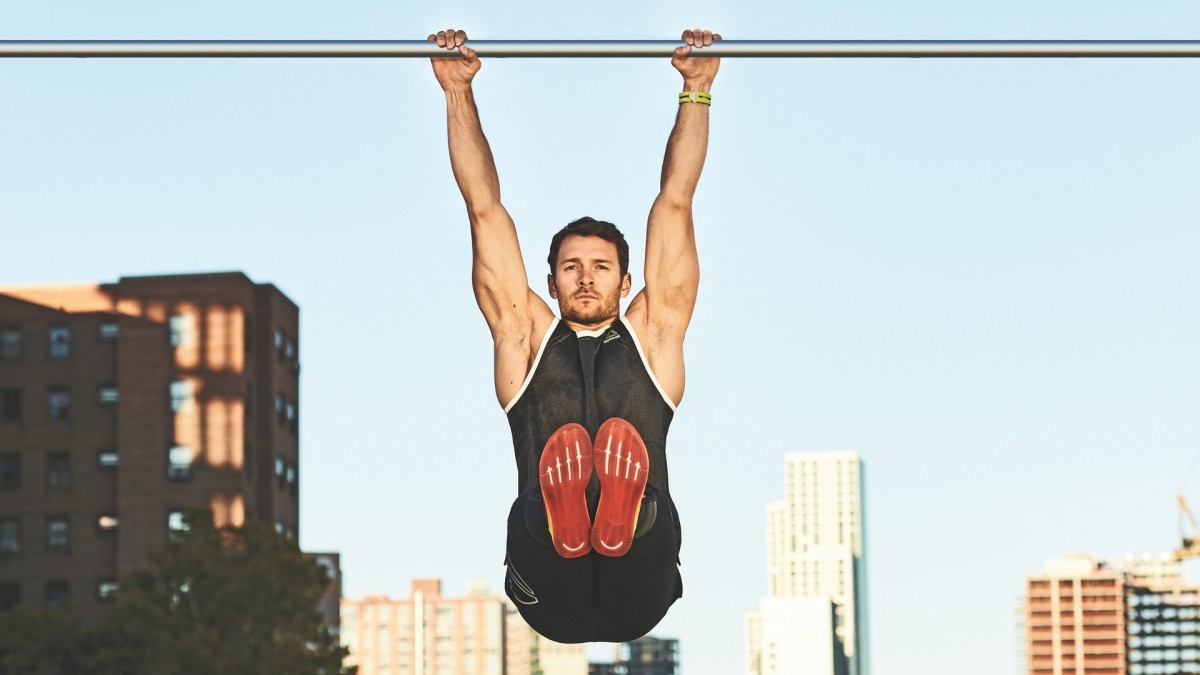How To Do Hanging Leg Raises for Rock Solid Abs
Add these to your core routine immediately.

Getting visible abs is a goal for many men, and fitness companies cash in—pushing everything from fat-burning supplements to ab machines that promise a rock-solid core. But if you’ve ever earned a coveted six-pack, you know the truth, it really comes down to a few key factors—dialed-in nutrition (they say abs are made in the kitchen for a reason), a low body fat percentage, and a serious core routine with dynamic moves like hanging leg raises.
For decades, crunches and sit-ups have been hailed as the go-to moves for a lean midsection. And while they can still play a role in your routine, if you're serious about carving out your core, hanging leg raises might be the real game-changer.
"Leg raises bring something different to the table compared to your standard sit-ups or crunches," says Gymshark Lifting Club Coach, Danny Gallagher. "While crunches mainly hit the upper abs, leg raises shine when it comes to targeting the lower portion of your core—an area that’s often undertrained. Plus, they challenge your hip flexors and force you to control your pelvis, which plays a huge role in overall core stability. It’s a more dynamic, full-range movement that builds real, functional strength—not just aesthetics."
Muscles Worked in Hanging Leg Raises
Unlike crunches, which primarily target the upper abs and obliques, hanging leg raises engage the lower abs, hip flexors (like your iliopsoas), and obliques, Gallagher says. The fact that you're hanging also activates your grip, lats, and shoulders. "That combination makes it a full-on core builder," he adds. "You’re not just training for a six-pack—you’re building core control that translates into better performance across other lifts or movements." James Michelfelder
How to Do It
- Hang from a pull up bar with hands slightly wider than shoulder width and palms facing forward, to start.
- Set your lats (pull your shoulder blades down your back) and engage your core to raise your knees to your chest. Or, to make it harder, keep your legs straight out in front of you as you raise them (pictured).
- Lower with control to the hanging position.
Incorporating Hanging Leg Raises
One of the most asked questions in the quest to build your core is "How often should I train my abs?" As with anything in fitness, there isn't a set answer. Gallagher says anywhere between 1 to 3 times a week is a solid sweet spot.
"Like any hypertrophic movement, it’s more about quality than quantity," he says. "Beginners can start with 1-3 sets of 5-10 controlled reps, while more advanced athletes might add reps, sets, or even resistance (think ankle weights or straight-leg raises). Progression is key."
Related: This Ancient Stretching Technique Speeds Up Recovery Overnight
Common Mistakes
If you've ever done hanging leg raises, you know one of the most difficult parts (apart from your grip slipping) is making sure you are not using momentum to swing your legs. Not only does this movement pattern not actually engage your core, but it can also put strain on your lower back.
"If you're just swinging your legs, you're missing the point—and the gains," Gallagher states. "To clean it up: move with control, brace your core before every rep, and focus on lifting with intent, not speed. Struggling to get the full range? Start with bent knees or try a supported version (like with a captain’s chair) to build up strength."























.jpg?width=1920&height=1920&fit=bounds&quality=70&format=jpg&auto=webp#)













































